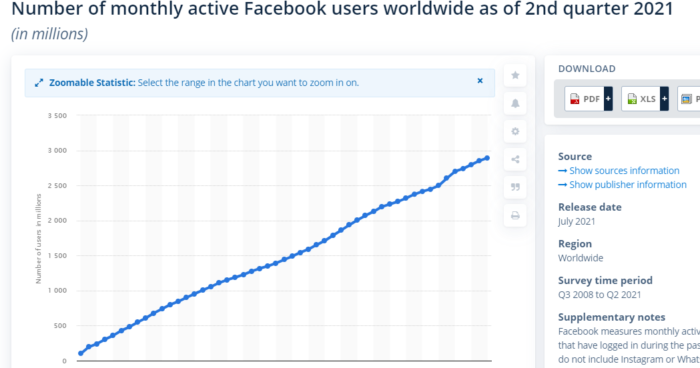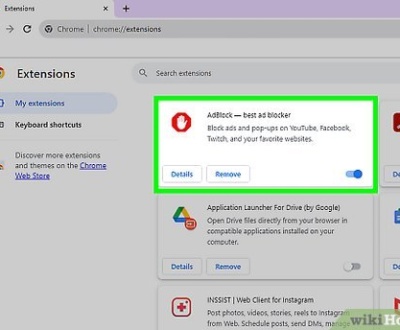Strategies for Social Media Marketing That Work
- November 29, 2022
- Digital Marketing, Inbound Sales, Lead Generation, Social Media
Times are changing. There’s more to a social media marketing strategy than posting on Facebook and Twitter a few times a day. If you want to build your brand, engage your prospects, and increase sales, it takes time and work and requires more than 1 social media channel. Let us walk you through what is now known as social selling.
You need to stand out from a plethora of competitors, and social media noise, and even compete with influencers, celebrities, and other big names.
The basic start is a Social Media Profile and some social media followers to kick-start your social media marketing efforts.
You need a brilliant social media strategy to stay up to date with the social media trends..
Often, like with any innovative marketing, you’ll find that you have to step away from traditional social media platforms—and continuously find new ways of reaching your target audiences.
The popularity of TikTok highlights the importance of keeping up-to-date with the ever-changing digital world, as to not miss out on key opportunities.
What is social media marketing?
Social media marketing is a form of digital marketing that leverages the power of popular social media networks to achieve your marketing and branding goals. But it’s not just about creating business accounts and posting when you feel like it. Social media marketing requires an evolving strategy with measurable goals and includes:
- Maintaining and optimizing your social profiles.
- Posting pictures, videos, stories, and live videos that represent your brand and attract a relevant audience.
- Responding to comments, shares, and likes and monitoring your reputation.
- Following and engaging with followers, ideal customers, and influencers to build a community around your brand.
Social media marketing also includes paid social media advertising, where you can pay to have your business appear in front of large volumes of high target audiences.

Social media marketing statistics
With regard to the benefits above, don’t just take our word for it. Let’s take a look at some social media marketing statistics that prove its power:
- The average US adult spends 2.25 hours on social media every day across all social platforms.
- Over 70% of people who have a positive experience with a business on social media will recommend that business to their social media networks.
- Facebook users click on 12 Facebook ads on average every month.
- 81% of people use Instagram to research products and services.
- Nearly 80% of Twitter users feel more positive about a business when they get a response to their tweet.
- 4 out of 5 people on LinkedIn drive business decisions.
- 46% of TikTok users engage in the app without any other distractions.
The essentials of a successful social media marketing plan
There’s no doubt about it: these days, your business needs to be on social media, and you should concentrate at least some of your marketing efforts (and budget) on your social media strategy.
With 4.48 billion people owning social media accounts, there’s a whole world of potential customers that any business can access, simply by logging in and creating brilliant social media content.
Brands like BooHoo, Depop, and Chipotle excel at social media, and there’s one simple reason: they integrate the core pillars of social media marketing.
There are five main pillars. Let’s talk through them one by one.
1. Strategy
A sound social media marketing strategy is the backbone of your social media presence which is now a key part of your overall digital marketing strategy. Without a strategy, you’re wasting time, unlikely to achieve your goals, and will most likely struggle to reach your target audience.
In case you’re not sure, a content strategy consists of getting the “Right content types, to the right people, at the right time.”
In its most basic terms, a content strategy helps you achieve your business goals by enabling you to:
- create valuable content
- drive engagement
- increase conversions
A good social media marketing strategy has clear goals, specific plans to reach those goals, and must be measurable.
Finally, you need to set benchmarks to see how things are going and whether you need to change your approach.
2. Planning and Publish
Social media is a powerful tool, but you can’t just go out there and start publishing content without a plan behind it.
When you’re planning compelling content make sure that you:
- Know your audience: You need to know the demographic of your audience in order to connect with them.
- Focus on quality: The quality of content is just as important as the quantity.
- Consider your brand: Keeping in line with your brand values is crucial.
When it comes to publishing, there is one golden rule: consistency. A regular posting schedule keeps people coming back for more.
TIP: Schedule posts, It makes scaling so much easier as you grow.
3. Listening and Engagement
Plan your content in a content calendar and above all, actually engage with your audience.
Your feedback might not always be positive; but, if you don’t make changes, neither will the tone of your responses.
Listening and engagement are all part of a successful digital transformation, especially if you’re going to enhance the overall customer experience.
It’s also worth mentioning that social listening isn’t just about customer experience. It can allow you to:
- pick up on new trends
- identify new streams of income
- gain industry insights
- find influencers in your niche
Need some assistance to get started with social listening? Hootsuite has a free introductory tool for measuring key terms and hashtags.
4. Analytics
The success of any social media marketing campaign depends on analytics for tracking and collecting data. Without this information, you can’t:
- understand user behavior
- refine your strategy
- find which platform works best for your brand
- discover the best times to post in real time
- analyze your competitors
Once you have all this, you’ll know with certainty what works and what doesn’t. That way you can spend more time on what does, and waste less. In turn, analytics will inform the decisions that you make for future social media campaigns—and highly influence the social media success rate.
Similarly, A/B testing is great for determining what content, design, CTA, etc. work best.
If you’ve been noticing certain types of content receiving double the engagement rate than other social media posts, play on that.
For example, if you’re a small business, your followers are most likely going to be family and friends who will love the personal insight and celebratory social posts because they care about you and your successes.
Producing high-quality engaging content that your audience isn’t interested in will mean that engagement levels tank. You need to work on making sure your posts appear in people’s feeds before you start feeding through those insightful industry blogs.
5. Advertising
For anyone looking for an audience, social media advertising is worth exploring. With approximately 2.89 billion monthly active users on Facebook alone, that’s an incredible amount of prospects.

The three main types of social media advertising are:
- Organic: Content that picks up views naturally and you don’t pay for.
- Paid: Content that an organization sponsors and therefore costs money to post.
- Earned: Content that has been given freely in the form of shares, likes, and comments.
There are several ways you can advertise on social media. For example, you can:
- Create content: This includes posts and videos.
- Promote content: Create posts that are promoted/sponsored.
- Engage with people: Get active in groups related to your industry, interact with influencers in your industry, etc.
- Grow a following: Get people in your industry to follow your brand by creating and sharing content that appeals to them.
- Get downloads: Offer PDFs, white papers, PowerPoints, videos, podcasts, etc. on your social channels and profiles.
Additionally, if you aim to enhance your brand recognition, build loyalty, and increase conversion rates, advertising could be the way to go.
Aside from these main pillars, you should also:
- ensure you focus your content on a specific niche or demographic
- build quality connections with influencers, brands, and potential customers you can build relationships with
- add value with your content and comments
Finally, ensure you’re accessible on social media so your customers know they can reach out to you.
The best social media marketing platforms for business
The best social media marketing platforms for business include Facebook, YouTube, Instagram, LinkedIn, Twitter, TikTok, and Snapchat. Different social media marketing sites require different approaches, so here’s a brief overview of each one—its user base, main vibes, pros, cons, and content types.


Facebook is the largest social media platform globally as well as one of the biggest local business directories. People of a diverse range of age groups use it to communicate with friends and family, participate in groups and forums, find and visit businesses near them, and follow brands. Facebook is a great social media marketing platform to:
- Build relationships with current customers
- Announce hours changes, events, and milestones
- Hold discussions and live streams
- Market to baby boomers
Organic reach on Facebook is limited, so if you’re looking to generate leads or find new audiences, Facebook advertising is your best bet.
YouTube
You may not think of YouTube as a social media marketing channel, but it fits the bill: you can post videos to your channel; share, comment on, and like other videos, and follow other accounts you like. Plus, you have a curated feed in your homepage with recommended videos. The key to social media marketing on YouTube is not to try to “go viral,” but to add value. It’s best for:
- Tutorials, how-tos, and explainer videos
- Shoppable YouTube live streams
- Advertising (video ads and display ads on the platform)
- SEO (video is dominating the “how to” SERP!)

Though it came onto the scene years after LinkedIn and Twitter, Instagram quickly surpassed those platforms and reached one billion monthly active users in 2018. It’s popular for its diverse content formats, including Feed posts (visual content), Stories, Lives, Reels, and IGTV. People use Instagram to follow influencers and brands they buy from and who support their personal values. Create your Instagram bio and then use it for:
- Social shopping
- Influencer marketing
- User-generated content
- Company culture
The cost of Instagram ads is generally higher than on Facebook, but the good news is that organic reach is also higher.

LinkedIn may be a professional network, but it’s also an inspiring community that celebrates leadership, learning, and core values. So in addition to using it to network, find prospects, and share industry insights, it’s also a great place to express your company culture and build your personal brand in parallel with your business brand. There are tons of LinkedIn company page features to take advantage of, so take care when building your page. LinkedIn is a great platform to:
- Attract top talent
- Network with partners, peers, and customers
- Share company milestones and culture
- Post industry news and insights

Twitter is a beautifully tangled network of quick thoughts, useful tidbits, and energized discussions. You should be regularly active on every social media platform, but it’s especially important here. Many people use Twitter to get news, follow brands, and get customer service. Be sure to retweet when a customer has something nice to say about you, and don’t forget to answer people’s questions when possible. For effective social media marketing on Twitter, you may want to:
- Follow influencers to keep up with news and trends.
- Share a story through a series of Tweets in one thread.
- Make yourself available for customer service and FAQs.

Snapchat
Snapchat isn’t just for teens. Its largest age group (75%) ranges from 13-34 and with Snap Maps, geofilters, and its partnership with Gannett, it’s more locally-focused than you might think. While you can’t build relationships on the platform, you can build an audience through fun images and short videos. Use Snapchat for:
- Location-based marketing
- App marketing
- Feel-good content

TikTok
TikTok is the fastest growing social media platform of all time, taking only five years to reach one billion monthly active users. While it’s known for dancing, there are countless popular categories on the platform that continue to grow. Businesses are finding ways to use it as a marketing channel, but just remember, the primary reason people use TikTok is for entertainment, so make sure your videos align with that. Use TikTok to:
- Participate in trending challenges
- Post funny and inspiring videos
- Be relatable

The Serial Seller Recommendations on Socials
Using social media in marketing does more than improve site traffic and increase your reach. It turns your business into a personality that your audience can communicate and connect with on a deeper level. As a business owner, a social presence is now a requirement more than a might-have and it is easier to outsource than to have your own social media team and social media tools.
Regardless of which platforms you use or how you use them, the most important thing to remember is that social media is not a platform to pitch your business. It’s a community for you to express your personality, demonstrate your values, share useful information, and build up those around you. With people naturally following you and promoting your content, there will be no need for pitching. And with this approach, you’ll achieve not just your business goals but all of the other intangibles that translate to gratification and fulfillment.
Social media management platforms like HootSuite and Sprout Social use proprietary technology to help more experienced social media marketers streamline their processes and get advanced analytics.
Just as one platform doesn’t do it for social media marketing, one channel doesn’t do it for overall marketing. Digital marketing agencies such as The Serial Seller can help you to incorporate social media marketing into your broader social strategy that includes email, website, SEO, and more.
We help you with your social media content and help you achieve your social media goals by building out a social media plan that works for you.
If you want to learn more about Social Media Marketing on one or platforms, Book A Call With Us Now!
About us and this blog
We are a Full-Service Sales & Marketing provider that aims to help small to medium businesses increase their leads and sales while helping remove the business owners from their day-to-day activities so they can focus more on the long-term goals of their business.
Book a Meeting with us!
We offer Done-For-You Sales, Sales Coaching, and Advisory as well as Digital Marketing Services. If you want to increase the leads generated for your business and need some guidance and accountability, book a call with us now.
Subscribe to our newsletter!
More from our blog
See all postsRecent Posts
- How Do You Stop Google Ads May 9, 2025
- How to Make Money Off Social Media May 5, 2025
- How to Duplicate Page WordPress May 1, 2025









